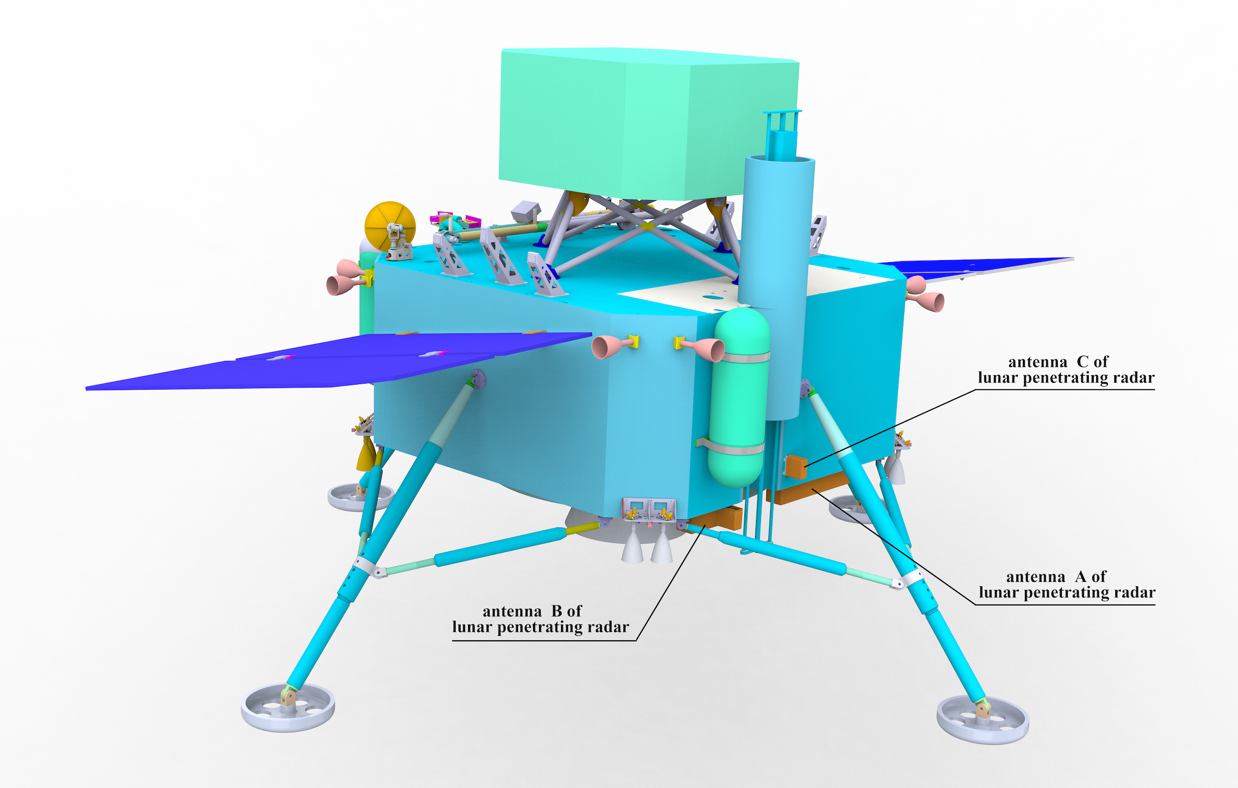At 6:23 a.m. on June 2, the Chang'e-6 lander successfully touched down in the South Pole-Aitken Basin on the far side of the Moon. After the landing, the probe is scheduled to complete sampling within two days. It has adopted two methods of moon sampling, which include using a drill to collect subsurface samples and grabbing samples on the surface with a robotic arm.
The lunar penetrating radar effective payload, developed by the Aerospace Information Research Institute (AIR) of the Chinese Academy of Sciences (CAS), undertakes the task of subsurface detection before drilling and sampling. The lunar penetrating radar allows scientists to study the layer structure information beneath the Moon’s surface before sampling.
The lunar penetrating radar was activated at 9:15 a.m. on June 2. Beijing Aerospace Control Center had received the data by 9:43 a.m., and then completed subsurface imaging and data interpretation. The radar data revealed a clear picture of subsurface structure including fracture zone and boulder distributions in the sampling area. Based on this information, drilling operation began at 10:07 a.m., reaching a depth of over 1000 millimeters, and completed at 12:30 p.m.
The precise subsurface information from the lunar penetrating radar provides the basis for planning the drilling strategies, enabling the first-ever mission to collect samples from the Moon's far side. At this point, the lunar penetrating radar has completed the designated tasks. Subsequently, scientists will carry out scientific research based on the obtained data.
The lunar penetrating radar for Chang'e-6 mission was developed by the Key Laboratory of Electromagnetic Radiation and Sensing Technology at AIR. The payload prototype was delivered in July, 2018, and has experienced a nearly six-year storage period before the launch. Scientists from the lab conducted numerous tests and experiments to ensure the payload's quality and reliability, including electrical performance tests, environmental tests, recalibration validation, scientific index verification tests, and system joint tests.
AIR has a strong team specializing in lunar and deep space detection radar payload technology. This team has developed the effective payloads for the Chang'e-3, Chang'e -4, and Chang'e-5 missions, as well as the penetrating radar for the Tianwen-1 Mars probe.

Chang’e-6 lander completes lunar far side drilling and sampling. (Image by China National Space Administration)

A rendered image of Chang’e-6's effective payload, lunar penetrating radar. (Image by AIR)






